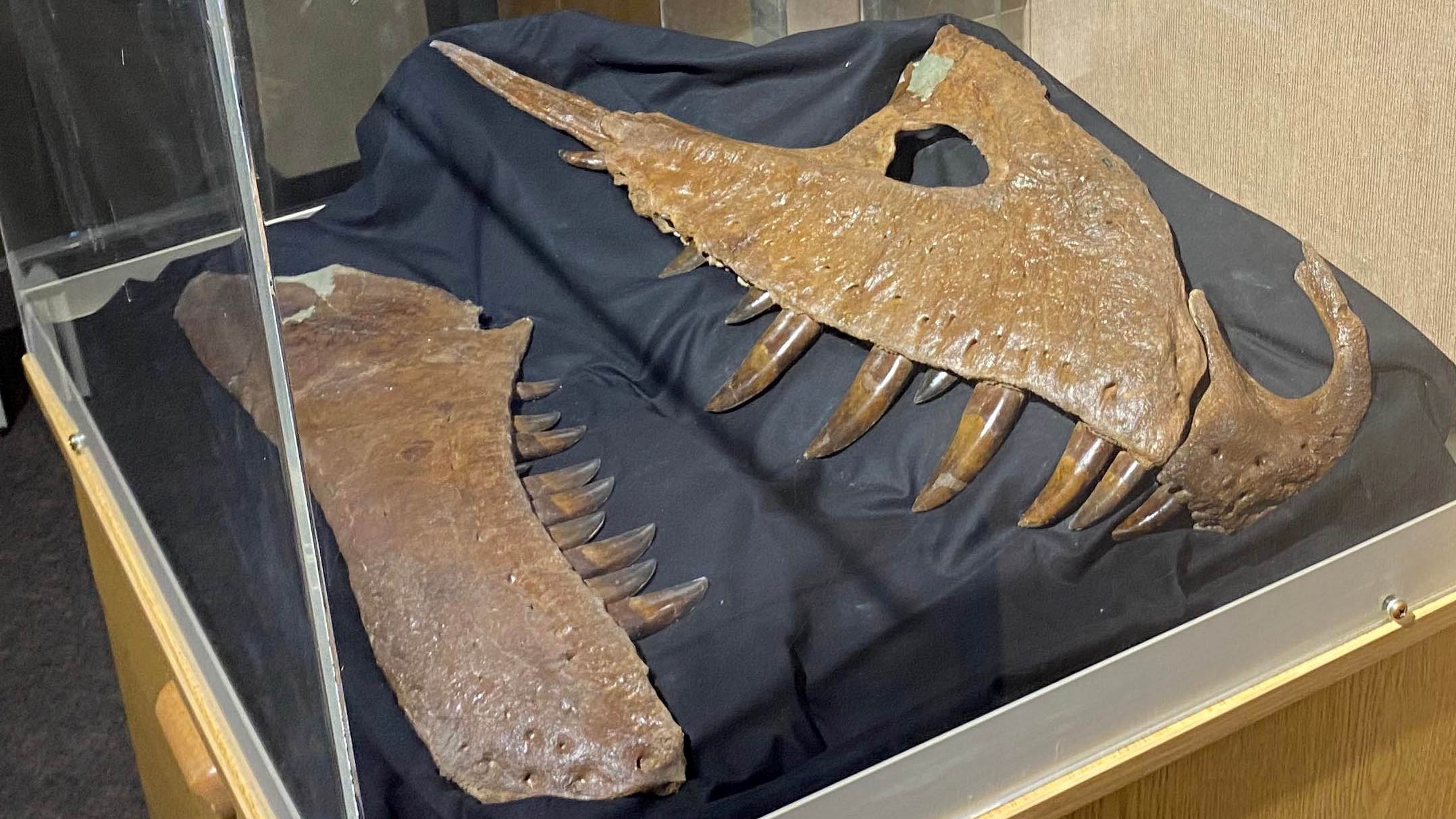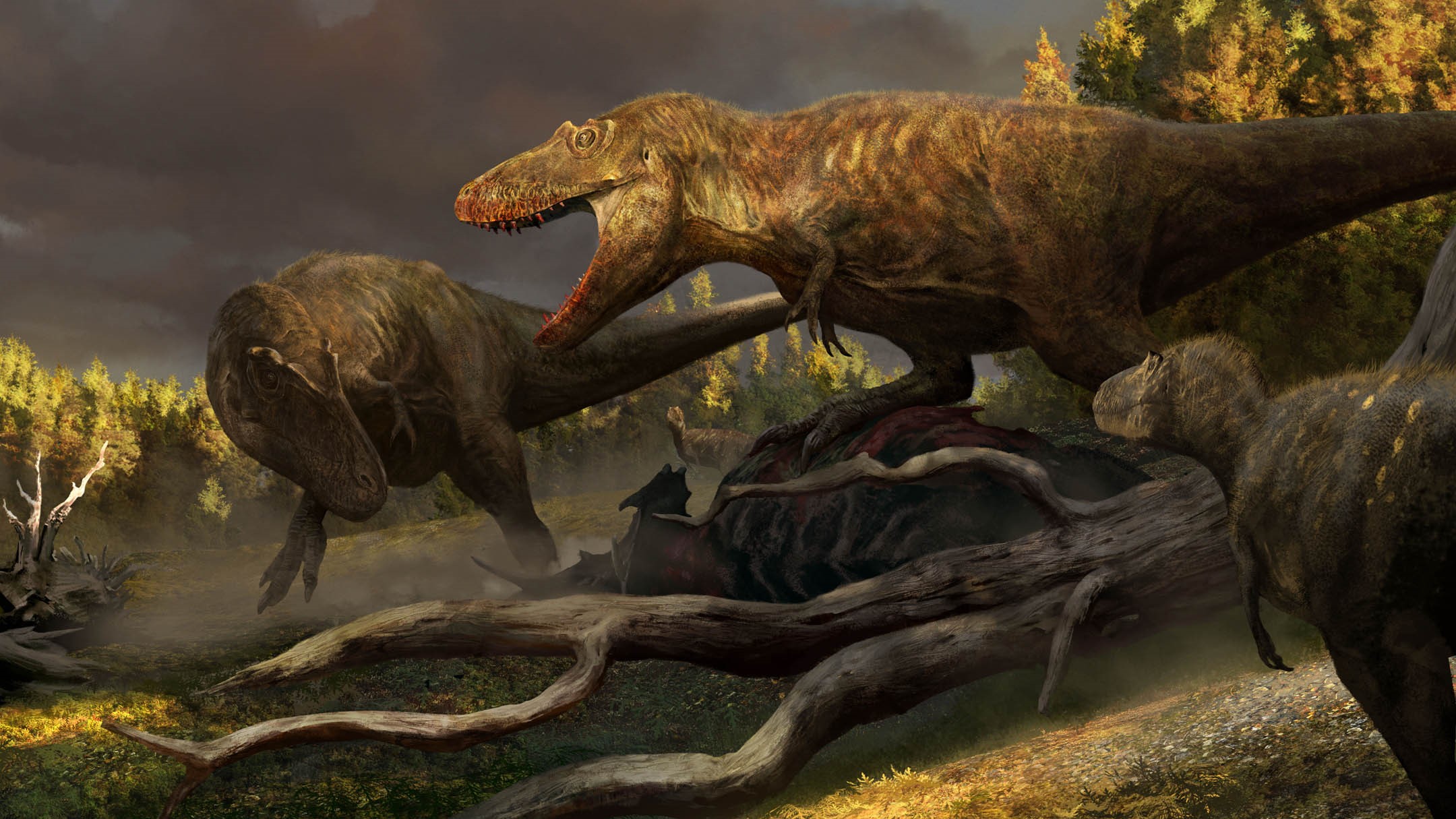'Frightful' never-before-seen tyrannosaur might be the 'missing link' in T. rex evolution
Paleontologists have discovered fossils belonging to a newfound species of tyrannosaur, which could fill an important gap in the evolutionary history of T. rex.
Paleontologists have uncovered the remains of a never-before-seen tyrannosaur that was possibly a direct ancestor of the dinosaur king Tyrannosaurus rex. The newfound species could help settle a big debate about T. rex's evolutionary lineage.
The newfound species, Daspletosaurus wilsoni, has a unique arrangement of spiked hornlets around its eyes. The tyrannosaur was identified from parts of a fossilized skull and skeletal fragments, including a rib and toe bone, that date to about 76.5 million years ago during the Cretaceous period (145 million to 66 million years ago). Paleontologists from the Badlands Dinosaur Museum in North Dakota uncovered the fossils at the Judith River Formation, in northeastern Montana, between 2017 and 2021, according to a new study, published Nov. 25 in the journal Paleontology and Evolutionary Science.
The team initially stumbled across the fossils after crewmember Jack Wilson noticed a small, flat piece of bone projecting out from the bottom of a cliff, which later turned out to be part of the dinosaur's nostril. Excavating the bones, however, proved to be immensely challenging because they were buried beneath 26 feet (8 meters) of solid rock. The researchers had to painstakingly chisel away large parts of the cliff with jackhammers before they could even start excavating the individual bones.
The specimen, designated BDM 107, was playfully nicknamed "Sisyphus" in recognition of the enormous effort required to remove the surrounding rock. (Sisyphus is a figure from Greek mythology who, after cheating death twice, was forced by Hades, the god of death, to repeatedly roll a boulder up a mountain for eternity.)
Related: T. rex and its close relatives were warm-blooded like modern birds
The researchers think that D. wilsoni was the descendant of Daspletosaurus torosus and the predecessor of Daspletosaurus horneri, which likely emerged between 77 and 75 million years ago. The anatomy of the newfound beast supports the idea that the Daspletosaurus lineage is ancestral to the mighty T. rex. All three daspletosaur species belong to the family Tyrannosauridae, which includes nine genera, including Tyrannosaurus. (The genus Daspletosaurus is Greek for "frightful lizard.")



Until now, the Tyrannosauridae lineage has been difficult to unravel, making it hard to determine the exact evolutionary relationships between individual species.
Get the world’s most fascinating discoveries delivered straight to your inbox.
"Many researchers disagree as to whether tyrannosaurids represent a single lineage evolving in place, or several closely related species that do not descend from one another," study co-authors and palaeontologists Elías Warshaw and Denver Fowler wrote in a statement. This has not been helped by a lack of high-quality specimens to examine, they added.
But the discovery of D. wilsoni suggests that the three daspletosaurs came one after the other, like "consecutive ladder-like steps in a single evolutionary lineage," rather than branching off from one another like "evolutionary cousins," the researchers wrote.
D. wilsoni is a good candidate for being a transitional species between D. torosus and D. horneri because it shares a number of traits with more ancient tyrannosaurs, such as having a prominent set of horns around the eye, as well as traits seen in younger species, such as expanded air-pockets in the skull, according to the statement.
"In this way, D. wilsoni is a 'halfway point' or 'missing link' between older and younger tyrannosaur species," the researchers wrote.
Given that these species could have evolved one after the other, the team suggests that the rest of the tyrannosaurids, including T. rex, could also have emerged in a similar linear fashion. The researchers are currently planning a new study to explore this idea, according to the statement.

Harry is a U.K.-based senior staff writer at Live Science. He studied marine biology at the University of Exeter before training to become a journalist. He covers a wide range of topics including space exploration, planetary science, space weather, climate change, animal behavior and paleontology. His recent work on the solar maximum won "best space submission" at the 2024 Aerospace Media Awards and was shortlisted in the "top scoop" category at the NCTJ Awards for Excellence in 2023. He also writes Live Science's weekly Earth from space series.




